- Home
- TV History
- Network Studios History
- Cameras
- Archives
- Viewseum
- About / Comments
Skip to content
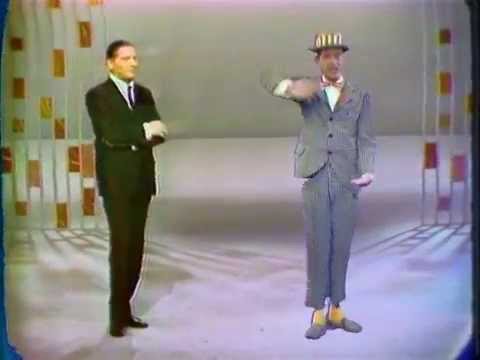

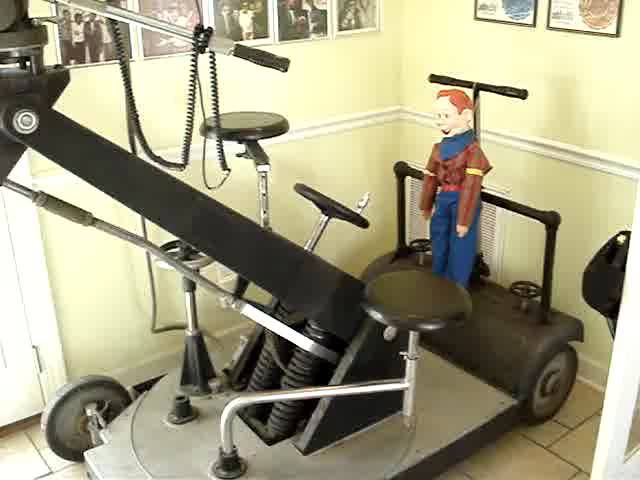

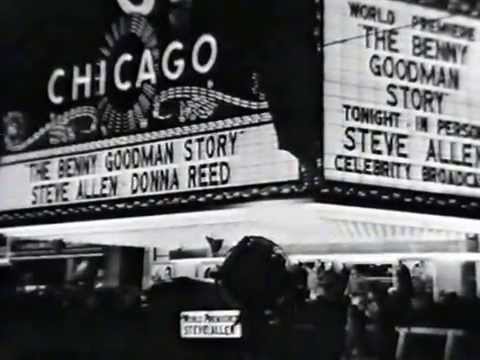

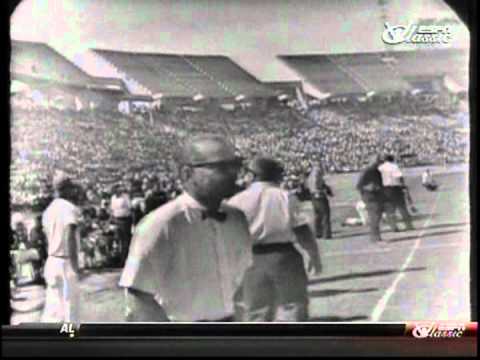

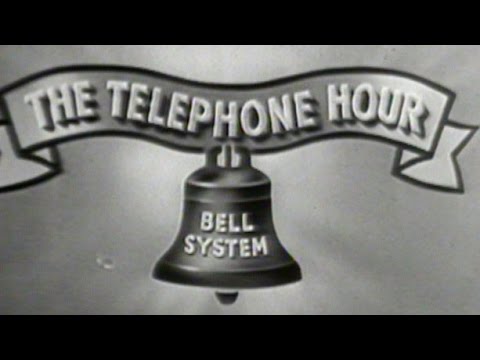





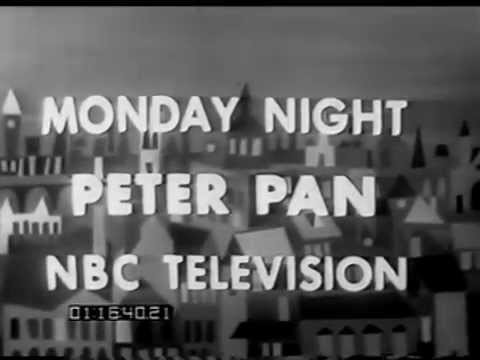

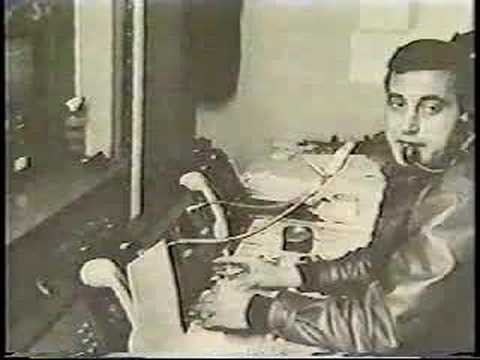

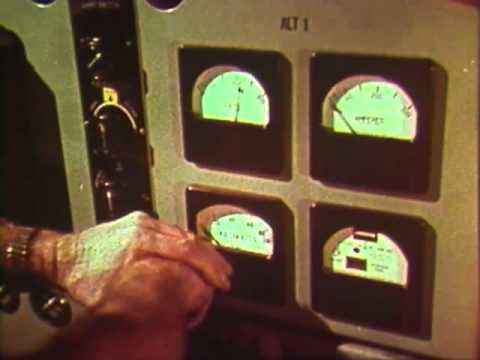

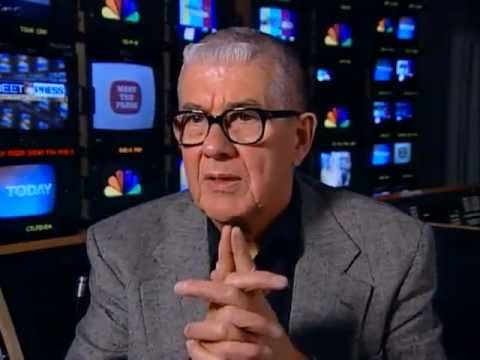





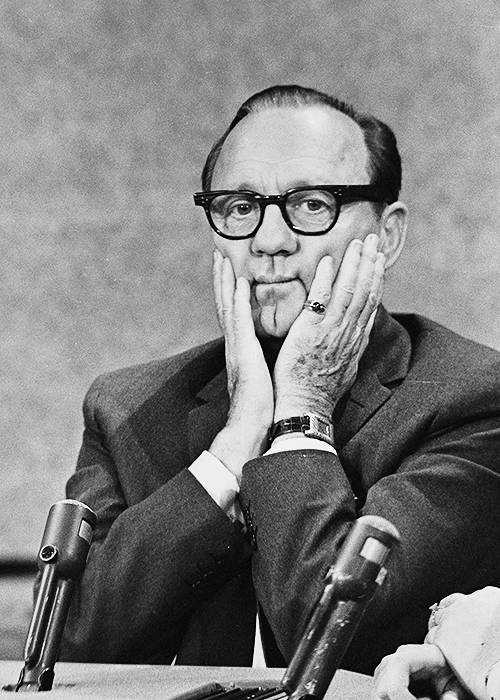
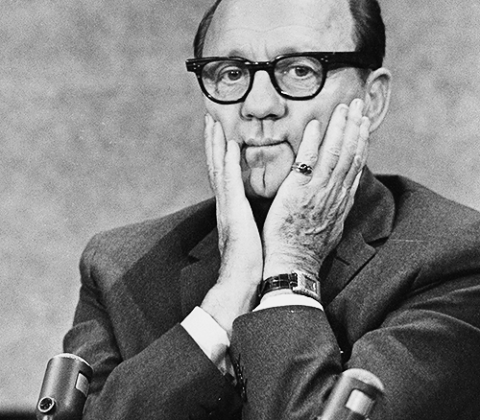
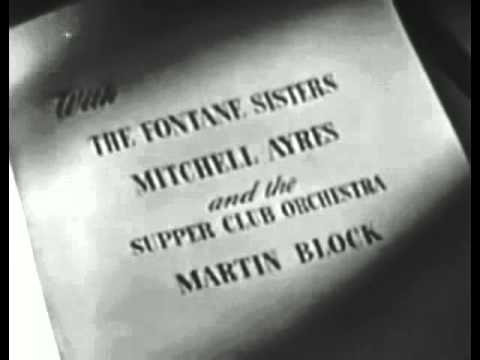

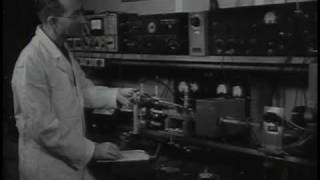

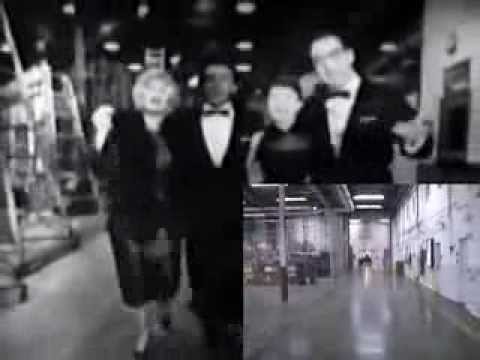

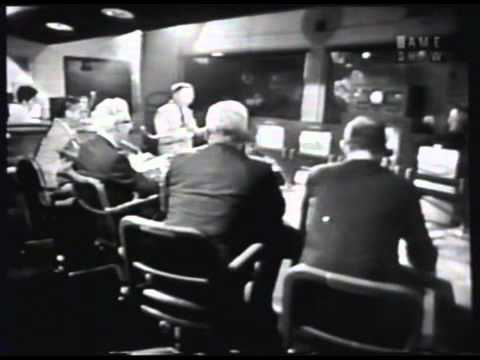

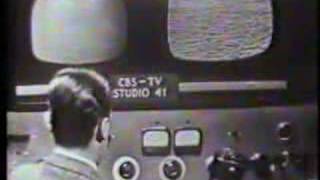

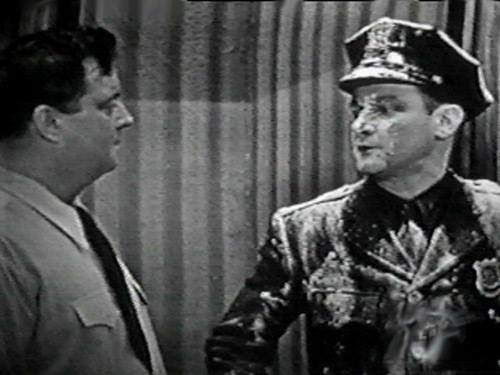

Posts in Category: Viewseum


A Primer On The History Of Chroma Key In Television
On February 5, 2015
- TV History, Viewseum
A Primer On The History Of Chroma Key In Television…
Was this Milton Berle chroma key sketch the first? No, but it is one of the most sophisticated early uses of the technology as it employs both chroma key and video tape editing. This was quite a feat in 1959!
Motion picture production had been using compositing for years prior to the invention of television, but it was an involved process requiring optical printers and intermediate film mattes, hardly suitable for the immediacy of live television.
In July of 1957, chroma key had its first on-air test on one of NBC Burbank’s more ambitious projects, ‘Matinee Theater’ that ran from 1955 to 1958. Every weekday afternoon, a one-hour live dramatic production was presented. The source material varied, but often it was an adaptation of some famous literary work.
A television version of the H.G. Wells classic “The Invisible Man,” lent itself perfectly for the first live use of chroma key. When the title character’s hands and head were wrapped in blue and he stood in front of a blue screen, the chroma key amplifier would replace the blue parts of the video with an image from another camera. All that would be seen in the composite shot was the man’s clothing in front of scenery being shot by the background camera, thus making him appear to be invisible.
Chroma key was developed by Frank Gaskins, NBC Burbank’s technical operations supervisor and Milt Altman, graphics arts supervisor. Together, they pooled their talent to develop what has become standard equipment on live video switchers throughout the world and now can be launched on any home computer. Today, blue has been largely replaced by the use of green, but is the same process. The key color change became necessary when video started to be compressed and primary colors began to be sampled at the ratio of 4:2:2, with luminence and green being the only fully sampled channel in most cases. -Bobby Ellerbee
Ellerbee Camera Collection Video Tour
On February 1, 2015
- TV History, Viewseum
https://www.facebook.com/watch/?v=10200462127141865
For those of you that have never seen this, here it is again. I shot this a couple of years back with a small 35mm photo camera and it shows all of the 16 cameras I have on display here in my home. At the time, I had about 25 cameras, now, with the addition of the 70+ ENG cameras, there are about 100 cameras in the collection. Enjoy!


Fantastic TV History in Steve Allen Video Bio!
On December 27, 2014
- TV History, Viewseum
Of all the bio and tribute shows I have seen, THIS IS THE BEST EVER! Really!
There is very rare footage here of Steve’s carrier and even the very first ‘Jose Jimenez’ sketch from Bill Dana who Allen discovered, along with Don Knotts, Tim Conway, Tom Poston, Louis Nye and more… you will see them ALL, and MORE here! This is just amazing! Get some coffee, click start, enjoy and share! -Bobby Ellerbee


Some Television Firsts In Football…Pro and College
On December 26, 2014
- TV History, Viewseum
Some Television Firsts In Football…Pro and College
Here are some interesting firsts in the coverage of the game. The video is from ABC’s first season of what would become a juggernaut in television sports coverage…’Wide World Of Sports’.
Here, in a preseason game between the Dallas Texans and the San Diego Chargers, we will see the first use of an overhead camera with a platform suspended by a 130 foot crane. There are also microphones on the quarterbacks, which was another first. Finally, there is a portable camera on the sidelines. We have seen NBC do this in 1956. They seem to have not followed through but Roone Arledge did.
By the way, it is thought the first overhead camera use in an NCAA game came at The Liberty Bowl in 1964. Enjoy and share! -Bobby Ellerbee


Inside NBC Radio Studio 6B, 1945
On December 19, 2014
- TV History, Viewseum
Rare New Video…Inside NBC Radio Studio 6B, 1945
We’ve seen a similar film in the past, but this seems to be a new addition to the AT&T archives. In the beginning, we meet the people in the studio, but at 6:00, we get a couple of minutes behind the scenes and see how the program is distributed on the nation wide NBC network by AT&T. Remember, back then, everything had to go through Ma Bell, including television.
Notice how large the studio is and well lit this is. When 6A and 6B became radio studios in November of 1941, just a month before Pearl Harbor, they were built with TV in mind. Thanks to Steve Finkelmeyer for sharing this. Enjoy and share! -Bobby Ellerbee


December 17, 1953…FCC Approves RCA Color, A First Hand Account
On December 17, 2014
- TV History, Viewseum
December 17, 1953…FCC Approves RCA Color, A First Hand Account
Thursday afternoon on the 17th, the FCC approved the RCA Dot Sequential color system as the national standard. Our friend and former NBC engineer Frank Merklein was actually the one that broke the news to David Sarnoff. Below is part of an email from Frank to me on these subjects.
“General Sarnoff was the force behind trashing the CBS mechanical wheel and to forming the NTSC color committee of all the US manufacturers. NBC had been doing daily closed circuit color test shows (the same show every day for 2 1/2 years) from 3H and the Colonial Theater. I was part of that testing and Sarnoff had made me a member of one of the committees”
“When the FCC chose the RCA system, the General was in our studio, 3H. I was on the phone with the FCC, I turned to the General and gave him a prepared message. “General Sarnoff, the FCC informs you that they have unanimously approved of the NTSC system for color.” He grinned, blew smoke from those over-sized cigars he inhaled and thanked everyone… Great memory.”
The next day RCA had full page ads in several major newspapers and rumor has it, there was a color slide that Friday just before ‘The Howdy Doody Show’ (see the slide in comments below). More than likely, John Cameron Swayze also made mention of it in Friday’s ‘Camel News Caravan’ broadcast.
The next day was Saturday and NBC’s biggest audience of the week would gather around their sets for ‘Your Show Of Shows’ and that’s when the big announcement was made as seen in this video clip of the occasion. Enjoy and share! -Bobby Ellerbee


Mega Version! Behind The Scenes At…’The Price Is Right’ 2013
On December 9, 2014
- TV History, Viewseum
Mega Version! Behind The Scenes At…’The Price Is Right’ 2013
This is a one hour, real time, look at the show in production…it’s VERY interesting and fun to watch. Notice the cameras are all cable free and are now wireless. The yellow and white boxes on the pedestals are batteries that run the RF, and you can occasionally see the transmitting gear on each camera.
This is a great hour inside Studio 33, but we’ll see every aspect of the show including the control room, back stage prize set ups and more. Enjoy and share! -Bobby Ellerbee


ULTRA RARE! 1956 ‘Peter Pan’ Promo
On December 2, 2014
- TV History, Viewseum
ULTRA RARE! 1956 ‘Peter Pan’ Promo
As we just read in this morning’s first story, the first television production of ‘Peter Pan’ was March 7, 1955. On January 9, 1956, NBC Brooklyn did it again…live and in color. Here is a promo for the second broadcast that fortunately was captured from inside a kinescope of the January 6, 1956 ‘Ernie Kovacs Show’. Thanks to Ben Model for the capture and to Randy West for bringing this to my attention. Enjoy and share! -Bobby Ellerbee
This is the promo that aired on NBC in January 1956 for “Peter Pan” starring Mary Martin. Sourced from a kinescope of “The Ernie Kovacs Show” from Jan 6, 1956


The First Instant Replay…Thanks to CBS Director Tony Verna
On November 30, 2014
- TV History, Viewseum
The First Instant Replay…Thanks to CBS Director Tony Verna
The first isolated camera and a “borrowed” Ampex VR 1000 brought life to a new element of broadcasting that would forever change football and sports coverage.
The following account of how it came to be is from “ESPN College Football Encyclopedia: The Complete History of the Game”.
Dec. 7, 1963: The Birth of Instant Replay
Ask football fans if instant replay has its roots in the college or the professional game and most will go with the pros. But those who tuned in to the Army-Navy game on CBS on Dec. 7, 1963, know better.
When director Tony Verna, a Philadelphia native, returned to his hometown to direct the Army-Navy game that year, he arrived with a unique plan and a giant, 1,200-pound tape machine he had unplugged and transported from the CBS network control room at Grand Central in New York. Unbeknownst to all but a handful of
CBS executives and his crew, Verna was going to attempt to give viewers an immediate second look at a play.
“Video replay” was Verna’s unofficial name for the yet-to-be unveiled and considerably risky innovation. Risky because at that time the Army-Navy game was the showcase game in college football. In this pre-Super Bowl era, there was no grander stage in televised sports than the annual clash between the Cadets and Midshipmen. And in
1963, the stakes were even higher. Millions of Americans would be tuning in to the high-profile military rivalry game because of the assassination of President John F. Kennedy 16 days earlier.
For Verna, the genesis for the idea came years before when, as a twenty something wunderkind recently hired by CBS executive Tex Schramm, he worked on that network’s telecasts of the 1960 Rome Olympics. The network aired the entire Olympics on tape delay — after the tape was flown across the Atlantic to New York. It was then
that Verna learned videotape possesses two audio tracks.
For his special replay, he would use one track for crowd noise, the other for a simple cue system that would help locate the correct spot on the tape. One solid, clean beep would indicate a team going
into a huddle; two clean beeps would indicate a team breaking a huddle.
Several glitches occurred during his first attempts at fusing his taped technology with the game in progress. His monolithic tape machine was spitting out seven to nine seconds of video hash, indecipherable, cluttered pictures, before locking into a clear shot of game action. Occasionally, his machine didn’t work at all. Instead of football
action, the monitor would reveal what was already on the tape, sometimes a scene from ‘I Love Lucy’ or a Duz detergent commercial.
For three nervous quarters, Verna peered into his monitor and studied his two guinea pigs, Navy quarterback Roger Staubach and Army counterpart Rollie Stichweh. Verna had assigned one camera to follow only the two signal-callers, primarily because Staubach was so skilled with his ball-handling and fakes that most cameramen couldn’t
keep up with him. Although Staubach was the winner of the 1963 Heisman Trophy, it was Stichweh who made television history that day.
Stichweh faked to an Army halfback before running into the end zone for a one-yard touchdown, Army’s last in a 21-15 loss. The requisite beeps sounded in the production truck. Words passed through
cables and into headsets. Seconds later, a clear image of Stichweh and the Army offense appeared on the monitor. Verna pulled the trigger and threw the picture on air.
“Here it comes,” he warned play-by-play announcer Lindsey Nelson, to whom he had revealed his intentions only hours earlier, during the taxicab ride to Philadelphia’s Municipal Stadium. Nelson didn’t even have time to forewarn his audience that they would be witnessing television history. Most important, though, Stichweh “rescampered”
into the end zone and the very first instant replay went off without a
technical hitch.
So as not to confuse viewers, Nelson alerted his audience to what they’d just seen: “This is not live! Ladies and gentlemen, Army did not score again!”
During the game, Schramm phoned Verna in the truck. “My boy,” Schramm told Verna, “what you have done here will have such far-reaching implications, we can’t begin to imagine them today.”
In fact, during the early days of the innovation following the 1963 Army-Navy game, the phenomenon became so popular that viewers demanded to see it during practically every sporting event, but unfortunately, there weren’t enough tape machines to go around.
Schramm’s words proved to be prophetic. In the ensuing decades, instant replay – Verna’s not certain which of two announcers, Ray Scott or Pat Summerall, actually named his invention – became a cornerstone component of all sports telecasts.
In the video below, we see Verna describe this and get an interesting glimpse of a CBS TK41 in action from stock footage. Enjoy and share! -Bobby Ellerbee


A Video Visit To NBC Brooklyn Studios, 1967
On November 25, 2014
- TV History, Viewseum
By Request…A Visit To NBC Brooklyn Studios, 1967
Here, you’ll see the great RCA TK41s in action at NBC Brooklyn. The date was March 13, 1966 and the production was ‘The Bell Telephone Hour’. That episode was “The Music Of The Movies” and in the clip you’ll see (Oz scarecrow) Ray Bolger and a young Peter Marshall. I’m not sure if this is Studio I or II, but it looks big enough to be I.
This is for our friends Russell Ross and Frank Gaeta, both long time NBC and TK41 veteran cameramen. I think Frank is in the dark sweater with the white collar on a ped camera. That may be Don Mulvaney on the crane? Enjoy and share! -Bobby Ellerbee
Directing JFK’s Arrival Back In Washington…November 22,1963
On November 23, 2014
- TV History, Viewseum
It is an honor for this site to have among it’s members, Max A. Schindler. Max not only directed ‘Meet The Press’ for over twenty years, but directed many special events for NBC including parts of the John and Robert Kennedy funerals and Martin Luther King’s “I Have A Dream” speech.
In the first part of this video (0:0 – 11:30) you will hear Mr. Schindler describe the events of November 22, 1963 as he tried to get to Andrews Air Force Base for the arrival. Only the two camera NBC truck had an AT&T connection, so CBS and ABC had to take his feed.
At 14:30 he talks about the MLK speech and at 19:19, about directing the RFK funeral with some very interesting details. At the link below is the NBC arrival coverage from Andrews. After President Kennedy’s casket was removed, President Johnson addressed the nation, but that is not included in this clip. Enjoy and share. -Bobby Ellerbee
http://www.youtube.com/watch?v=_23UyIuEzK4 Arrival video
ULTRA RARE! 3M’s 1976 “20 Years Of Videotape”
On November 13, 2014
- TV History, Viewseum
This is one of only 2 or 3 surviving copies of 3M’s 1976 NAB tribute video called ’20 Years Of Video Tape’ and covers, in amazing detail, the history of video tape starting even before the unveiling of the VRX 1000 at the 1956 NAB convention and goes all the way to 1976. This was the 20th Anniversary of the introduction of videotape.
This is historical in every way and this is the only place you will see it, so please share this with your friends! You will see and hear things here that you’ve never seen or heard before!
This is 20 minutes long, so sit back, enjoy and remember to share this! It’s the only way your friends can see it. Thanks to Neil Gjere for sharing it with us! -Bobby Ellerbee


1950s Demo Reel…Local Market Weather Package
On November 5, 2014
- TV History, Viewseum
1950s Demo Reel…Local Market Weather Package
These twenty second forecast pieces were usually not in lieu of a local weather report inside a regular newscast, but were used during the day as sponsored “public interest” spots with a ten second sponsorship slide and VO at the top of each one.
Telecine rooms were always busy back in those early days. It was all manually done with film, slides and live VOs and very “by the book” as the book had all the break and run times, slide and film numbers and live VO scripts. Stations that used this package would have had all these on separate mini reels with leader at the front and back end and woe be unto you if the box and reel numbers got mismatched. Enjoy and share! -Bobby Ellerbee


October 28, 1950…’The Jack Benny Show’ Debuts On CBS
On October 28, 2014
- TV History, Viewseum
October 28, 1950…’The Jack Benny Show’ Debuts On CBS
The video here is a kinescope of that first show, with special guest Dinah Shore. Since Television City was still being built, this probably originated at the CBS Studios at 1313 Vine Street or from Studio A at Columbia Square.
On this debut show which includes singer Snooky Lansen selling cigarettes at the start and Mel Blanc’s debut as a guest on the show (9:15), as Mel plays a stage hand. The monologue and the sketch are about how Jack decided to go on television, and how he put his initial show together. Rochester sings “My Blue Heaven” while doing his housework. Mr. Kitzel drops by to wish Jack good luck. Dinah Shore sings “I’m Yours” over the phone to see if Jack approves of it for her guest spot. On the show, Ken Murray drops by to wish Jack good luck, and Dinah and Jack sing a duet: “I Oughta Know More About You”. The Sportsmen Quartet do the Lucky Strike commercial. Jack closes the program playing his signature song “”Love in Bloom” on the violin.
The regular and continuing ‘Jack Benny Show’ was telecast on CBS from October 28, 1950, to September 15, 1964, and on NBC from September 25, 1964, to September 10, 1965 with 343 episodes produced.
The television show was a seamless continuation of Benny’s radio program with many of the same players, the same approach to situation comedy and some of the same scripts.
The show appeared infrequently during its first two years on CBS as Benny moved into television slowly. In his first season (1950–1951), he only performed on four shows, but by the 1951-1952 season, he was ready to do one show approximately every six weeks. In the third season (1952–1953), the show was broadcast every four weeks. During the 1953-1954 season, Benny aired every three weeks. From 1954 to 1960, the program aired every other week, rotating with such shows as ‘Private Secretary’ and ‘Bachelor Father’.
Beginning in the 1960-1961 season, ‘The Jack Benny Show’ began airing every week. During the 1953-54 season, a handful of episodes were filmed at Desilu during the summer and the others were live, which allowed Benny to continue doing his radio show. Enjoy and share! -Bobby Ellerbee


MUST SEE! Prime Time Television…1948 And 49 With My Detailed Notes
On October 25, 2014
- TV History, Viewseum
MUST SEE! Prime Time Television…1948 And 49 With My Detailed Notes
This is just amazing, so please…Share this! At the start, an NBC VO announces that the Midwest network links will be open and operating by Christmas, 1948. I would love to see the ‘Eye Witness’ series…it was all about television behind the scenes.
‘The Gay Nineties’ show was on ABC on Wednesday nights from 8 – 8:30. At 1:50 we see some of an early ‘Texaco Star Theater’ with Milton Berle from NBC’s newly converted Studio 6B. This was the first show to come from 6B after it was converted from radio to television June 8, 1948. The woman with the great laugh is Milton’s mother who was at every show.
Just after that is ‘The Ed Wynn Show’ and came from either NBC Studio 8G or 6B. At 3:32, ‘The Admiral Broadway Revue’ was the first television show produced by Max Leibman and starred Sid Caesar and Imogene Coca…this is the forerunner of ‘Your Show Of Shows’ and both were done at The International Theater at 5 Columbus Circle.
Ultra rare footage starts at 4:44 with the intro of ‘The Fireball Fun For All’ starring Olsen and Johnson. This only ran one season and was one of the first shows to come from CBS Studio 52. The assistant director is the legendary CBS director Ralph Levy in his second ever TV job. Levy went on to direct Jack Benny, Burns And Allen and the Lucy pilot. Levy’s first AD job was at the first show done at Studio 52, a summer show called ‘The 54th Street Revue’ that ran eight weeks.
There’s more history at 6:10…’The Chesterfield Supper Club’ starring Perry Como was the first television show to broadcast from NBC Studio 6A. The studio was not converted officially till May 19, 1950. When this was shot, 6A was still a radio studio with a three camera remote unit and very few lights, which you notice here.
More history at 6:50! This is ‘The Fred Waring Show’ from NBC Studio 8H. Like 6A, it too was still a radio studio when this was done with a three camera remote unit set up. 8H became an official TV studio January 30, 1950.
Remember the opening announcement about the midwest network link up? ‘Your Show Time’ had premiered on NBC’s East Coast stations in September 1948, and began to include NBC’s Midwest stations on January 21.
I think ‘Armchair Detective’ a Dumont show done at WABD. At 9:06 notice the producer title…William Boyd was Hopalong Cassidy, and a very smart showman! This show was an hour long and aired on NBC Friday nights at 8, starting in 1949.
‘The Lone Ranger’ debuted on ABC in September of 1949 and aired at 7:30 Wednesday nights.
Remember the Hungry Jack Biscuit commercials with the “Hungry…Hungry Jack” call? Here’s where it came from…the opening of ‘The Aldrich Family’ at 10:23. This was on NBC at 7:30 Sundays.
At 10:55, one of television’s biggest shows appears…’The Goldbergs’ which was on CBS and probably came from Liederkranz Hall. This started in 1949 and aired Monday nights at 9:30, just after ‘Candid Camera’. Just after that is another huge CBS show, ‘Mama’ which also started in 1949 and aired Friday nights at 8 against ‘Hopalong Cassidy’ on NBC.
‘The Ruggles’ began on ABC, November 3, 1949 – a month after the radio hit ‘The Life of Riley’ had moved to television on NBC and interestingly, that is the next clip…but if you were expecting William Bendix as Riley, surprise…Riley is played by Jackie Gleason! This was his first starring role.
At 13:10 we see the open for ‘Suspense’ which aired on CBS from ’49 till ’54. It was on Tuesday night opposite ‘The Life Of Riley’.
Finally, the last clip is from ‘Studio 1’. It was a big hit and important early anthology series on CBS that followed ‘The Goldbergs’ at 10 on Tuesday nights. I think this originally came from CBS Studio 41 at Grand Central. This debuted in September of 1948 and ran 10 seasons ending in 1958. Enjoy and PLEASE SHARE! -Bobby Ellerbee


Television In The Army…1953 ‘The Big Picture’ Special
On October 22, 2014
- TV History, Viewseum
Television In The Army…1953 ‘The Big Picture’ Special
This is about as good a look at RCA TK 11/31s in action as you will ever get, but we also see Dumont 5098C cameras here. There are some RCA TK30s scattered in and even a small Dage portable and RCA’s Walky Looky. There’s a lot of camera footage here, but you’ll have to skip around some.
The first 10 minutes of this is done at the Army’s New York facility and is RCA heavy. Some of the TK30 footage of the war games was shot at West Point.
The second segment takes us to Augusta, Georgia and the Southeast Signal Corps School at Ft. Gordon (where I trained), and this installation was equipped with Dumont equipment, including a kinescope machine which we’ll see.
At around 14 minutes in, we see a small Dage portable and at 21, more of the mobile unit with TK30s. At 22:25 we see the RCA Walky Looky in action. Many of us that grew up in the 50s and 60s remember watching these ‘Big Picture’ presentations on our local stations. Do you remember? Enjoy and share! -Bobby Ellerbee


Steve Allen Special…Singing Tour Of NBC Burbank
On October 17, 2014
- TV History, Viewseum
Special Updated Version Of NBC Burbank Stroll!
In yesterday’s post of the Jimmy Fallon record release, I mentioned that he was not the first ‘Tonight’ host to have a record charted in Billboard Magazine. Steve Allen was, and here is the song that he wrote and recorded in a very special television version!
This is the original 1958 footage of the famous stroll through NBC Burbank updated in 2013 with a present day look to the same route. Enjoy and share! -Bobby Ellerbee


‘I’ve Got A Secret’…Backstage Video 1962
On October 16, 2014
- TV History, Viewseum
‘I’ve Got A Secret’…Backstage Video 1962
A Rare Look At CBS Studio 52
This opens in the Control Room and moves to the stage of Studio 52. This is a long and narrow building with the entrance on West 54th Street and the back door on 53rd and is just behind The Ed Sullivan Theater, which is on Broadway.
As you watch, here is a key for orientation…entering from 54th street, the stage is on the left and the control room is on the right. As you’ll see, there is very little seating on the studio floor as 90% of the audience is in the balcony, which is still there. I was in this building in May. Here is the CBS Spec Sheet for this studio.
The show moved here from Studio 59 in late 1960 and this is the show’s 10th Anniversary episode. Enjoy and share! -Bobby Ellerbee


‘See It Now’ Debut With First Ever Commercial Coast To Coast Feed
On October 13, 2014
- TV History, Viewseum
‘See It Now’ Debut With First Ever Commercial Coast To Coast Feed
Today, when news breaks, we can get live pictures from almost anywhere in the world almost instantly, but this was not always the case and we take that ability for granted.
Here’s a reminder of the incredible effort it took just to get live pictures from coast to coast, memorialized in this first broadcast of ‘See It Now’ with host, Edward R. Murrow. Murrow is broadcasting live from the CBS Studio 41 control room in Grand Central, with the legendary Don Hewitt behind him directing.
On September 4, 1951,President Harry S. Truman’s opening speech at The Japanese Peace Treaty Conference in San Francisco was broadcast across the nation, marking the first time a television program was broadcast from coast to coast. The broadcast, via then-state-of-the-art microwave technology, was picked up by 87 stations in 47 cities, according to CBS.
On November 18, 1951, Edward R. Murrow on the ‘See It Now’ debut presented the first live coast-to-coast commercial television broadcast in the US, showing a split screen view of the New York Harbor and the Golden Gate Bridge in San Francisco.
This east – west link was made possible by AT&T’s new microwave radio-relay skyway, the first facilities to transmit telephone, radio and television across the United States by radio rather than wire or cable.
The new route, at the time the longest microwave system in the world, relayed calls along a chain of 107 microwave towers, spaced about 30 miles apart. AT&T spent over three years building it at a cost of $40 million.
This historic debut of ‘See It Now’ went off without a hitch. The New York Times reported that “the image reproduced on screens in the New York area, nearly 3,000 miles from the scene, had excellent clarity and compared favorably with programs of local origin. The contrast was of first-rate quality and there was no distortion.” Enjoy and share! -Bobby Ellerbee
October 5, 1951…’The Honeymooners’ Debut…Ultra Rare Video
On October 5, 2014
- TV History, Viewseum
This is the first time America met Ralph and Alice Kramden…it was October 5, 1951 on Dumont’s “Cavalcade Of Stars”.
In July of 1950, Jackie Gleason took over as host of Dumont’s ‘Cavalcade Of Stars’. The original hosts were Jack Carter and then Jerry Lester with Morey Amsterdam filling in occasionally. By the middle of ’51 Gleason and his writing staff developed an idea for a sketch based on the popular radio show ‘The Bickersons’.
Gleason wanted a realistic portrayal of life for a poor husband and wife living in Brooklyn. The couple would fight almost constantly, but ultimately show their love for each other. After rejecting titles like The Beast, The Lovers, and The Couple Next Door, Gleason and his staff settled on ‘The Honeymooners’ for the name of the new sketch.
The debut sketch on October 5, 1951 was six-minutes and the tone of these early sketches was much darker than the later series, with Ralph exhibiting extreme bitterness and frustration with his marriage to an equally bitter and argumentative middle-aged woman. By the way, Kelton was nine years older than Gleason.
Due in part to the success of these sketches, ‘Cavalcade of Stars’ became a huge success for DuMont. It increased its audience share from nine to 25 percent. Gleason’s contract with DuMont expired in the summer of 1952, and the financially struggling network was unable to re-sign him. That’s when he moved to CBS and ‘The Jackie Gleason Show’ debuted September 20, 1952 from CBS Studio 50, now known as The Ed Sullivan Theater. The rest as they say is history! Enjoy and SHARE! -Bobby Ellerbee